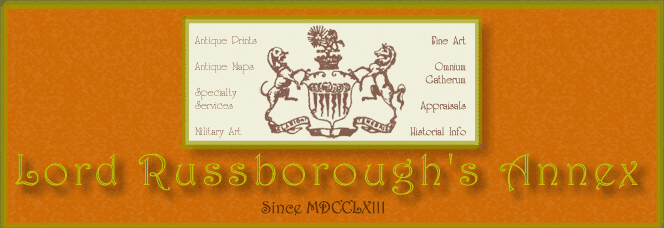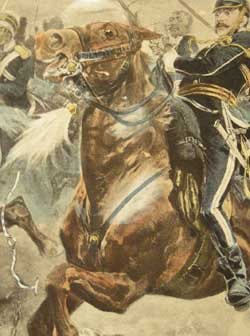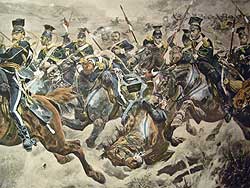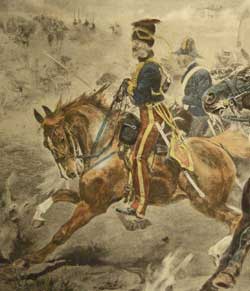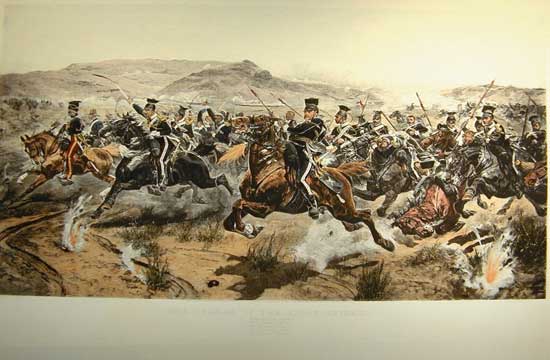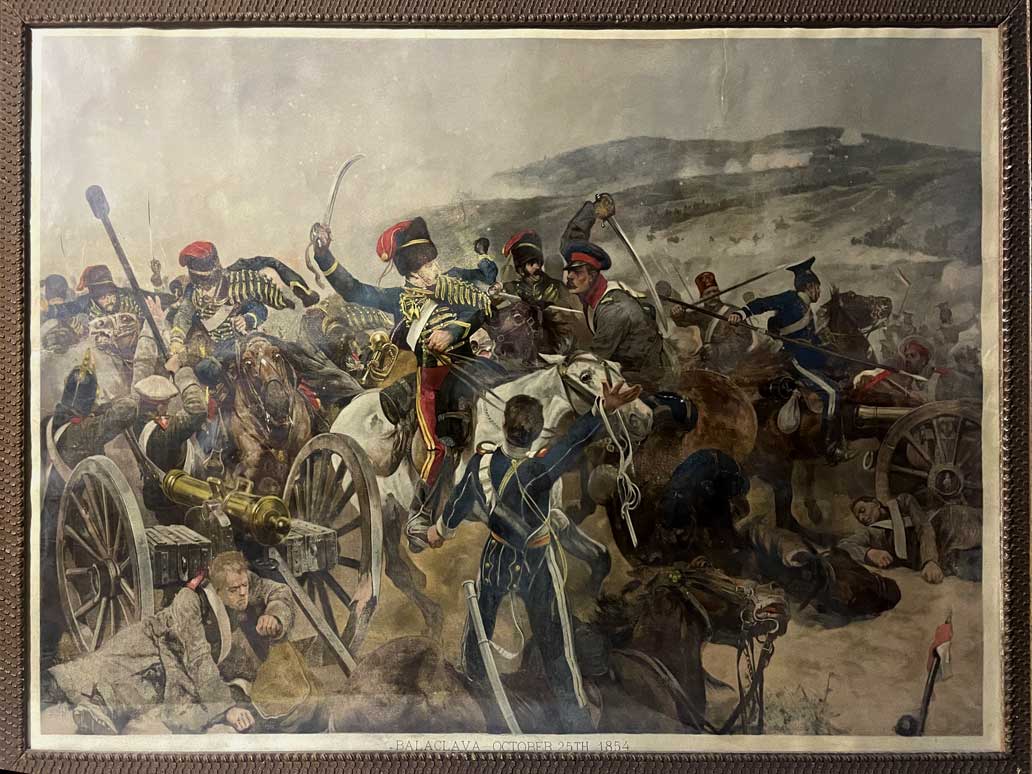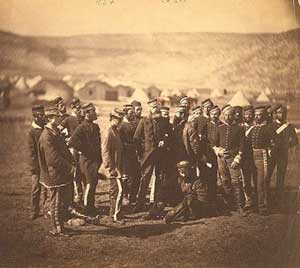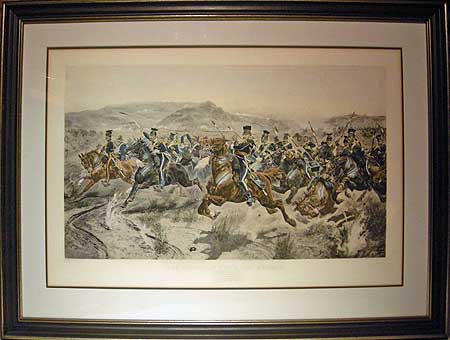
THE CHARGE OF THE LIGHT BRIGADE 1894
After RICHARD CATON WOODVILLE
verse of Tennyson poem below title.
Handcoloured photogravure. Published by Henry Graves & British Art Union 1895 Double matted, glazed, framed, dark-wood and gilt frame.
Image size 20 x 30 1/2" plate size: 24 1/2 x 37" ( 62.2 x 77.5 cm.) Frame : 36 1/4 x 48"
Ref. RY1(179)/ENN/ r.ando> DALN PRICE CODE E
The courage and discipline of the Lancers of the 17th. Light Dragoons is well captured, as the squadron's attempt to remain in line and reform as their number is decimated by the Russian fire, in this justly famous image.
In this original pull from the 1895 plate, the explanation for the pose of the central mounted Lancer is more apparent. For a close inspection shows that, to the left of the horse's head, the Martingale has either been shot, or broken, away and is seen dangling, causing the terrified horse’s head to rise up unexpectedly and the Lancer to pull back sharply on the reigns to remain in control.
The central figure in this dramatic image is believed to be Private James William Wightman (Ca1835-1907), who was severely wounded and taken prisoner in the Charge. He was repatriated in Autumn 1855.
On the left, at the head of the charge, may be seen the imperious Lord Cardigan, sitting calmly as if ‘on parade’, astride ‘Ronald’, his chestnut charger with the white leg. He claimed his thoughts were focused on how to discipline Capt. Nolan, who Cardigan believed was trying to upstage him.
Other details between this original pull and the late impression below, is the prominence of the green Chapska retaining piping on the uniforms of the Light Dragoons and the profuse sweating of rubbed skin on the chest and flanks of the terrified, over-heated & exhausted chargers.

